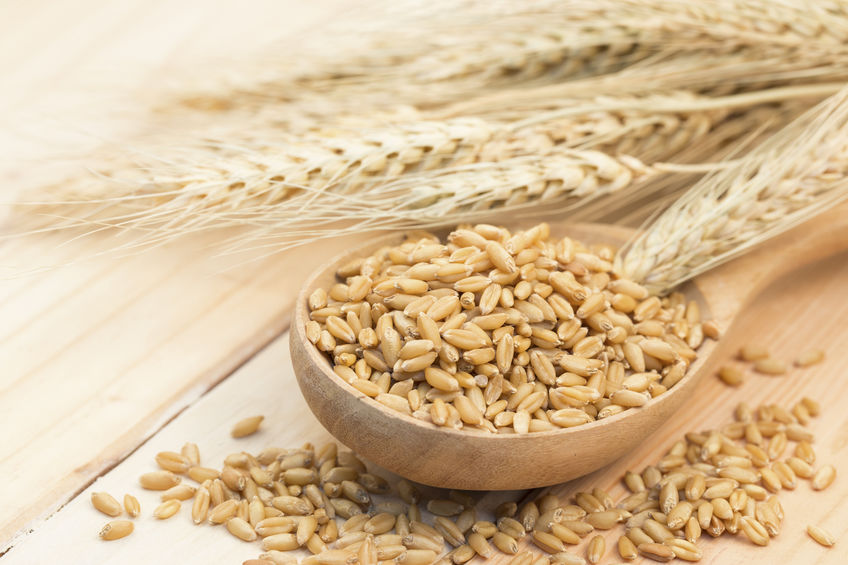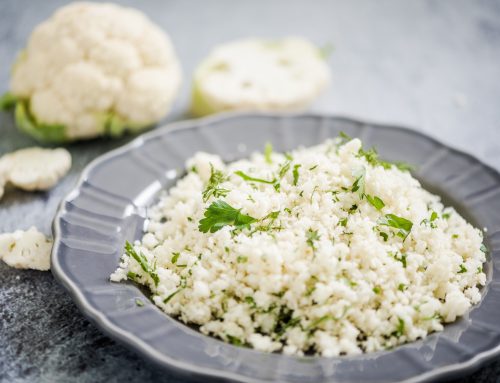Worried about high cholesterol? You can help lower your high cholesterol levels by eating whole grains. Try adding barley to your meal plans.
The Health Benefits of Barley
Barley contains important nutrients that can offer a range of health benefits.
1) Blood pressure
Maintaining a low sodium intake is essential to lowering blood pressure, but increasing potassium intake may be just as important.
According to the National Health and Nutrition Examination Survey (NHANES), fewer than 2 percent of American adults meet the daily 4,700-milligram recommendation.
Also, potassium, calcium, and magnesium, which are all present in barley, have been found to decrease blood pressure naturally.
A study published in the Journal of the American Dietetic Association in 2006 concluded that: “In a healthful diet, increasing whole grain foods, whether high in soluble or insoluble fiber, can reduce blood pressure and may help to control weight.”
2) Bone health
The iron, phosphorous, calcium, magnesium, manganese, and zinc in barley all contribute to building and maintaining bone structure and strength.
A careful balance of phosphate and calcium is necessary for proper bone mineralization. Consuming too much phosphorus with too little calcium intake can result in bone loss.
Bone formation requires the mineral manganese; also, iron and zinc play important roles in the production and maturation of collagen.
3) Reduces High Cholesterol and Promotes Heart health
Barley’s fiber, potassium, folate, and vitamin B6 content, coupled with its lack of cholesterol, all support a healthy heart. Barley is an excellent source of fiber, which helps lower the total amount of cholesterol in the blood, thereby decreasing the risk of heart disease.
In 2007, researchers found that barley intake significantly reduced high cholesterol readings and visceral fat, both of which are markers of cardiovascular risk.
The beta glucan fiber found in barley lowers LDL (“bad”) cholesterol by binding to bile acids and removing them from the body via excretion. An intake of 3 grams of beta-glucans per day can lower blood cholesterol levels by 5 percent.
In one study, those who consumed 4,069 milligrams of potassium per day had a 49 percent lower risk of death from ischemic heart disease compared with those who consumed less potassium (about 1,000 milligrams per day).
Vitamin B6 and folate, both present in barley, prevent the buildup of a compound known as homocysteine. When excessive amounts of homocysteine accumulate in the body, it can damage blood vessels and lead to heart problems.
4) Cancer
Selenium is a mineral that is not present in most foods, but it can be found in barley. It plays a role in liver enzyme function and helps detoxify some cancer-causing compounds in the body.
Additionally, selenium from dietary sources can help prevent inflammation. It may decrease tumor growth rates, and improve immune response to infection by stimulating production of killer T cells.
Fiber intake from plant-based foods is associated with a lower risk of colorectal cancer. Some studies have suggested that beta-glucan fiber may stimulate the immune system. As a result, it could help fight cancer cells and prevent tumors from forming. However, more evidence is needed to support this claim.
5) Inflammation
Choline is an important and versatile nutrient in barley that helps with sleep, muscle movement, learning, and memory.
Choline helps to maintain the structure of cellular membranes, aids in the transmission of nerve impulses, and assists in the absorption of fat. It may also help to reduce chronic inflammation.
6) Digestion and regularity
Barley’s fiber content helps prevent constipation and promote regularity for a healthy digestive tract.
7) Weight management and satiety
Adequate fiber intake is commonly recognized as an important factor in weight loss by functioning as a “bulking agent” in the digestive system.
Fiber in the diet helps to increase satiety and reduce appetite, making people feel fuller for longer. This can help lower the overall calorie intake.
Here’s a healthy barley recipe from the Berkeley Wellness Newsletter.
Chili Lime Barley Vegetable Salad
Ingredients (makes 4 servings)
- 1½ cups pearl barley
- ¾ teaspoon salt
- 4 teaspoons vegetable oil, such as olive or canola oil
- 1 red bell pepper, cut into ½-inch squares
- 1 medium red onion, coarsely diced
- 3 cloves garlic, minced
- 1½ cups frozen corn kernels
- 2 teaspoons chili powder
- ¼ cup fresh lime juice
- ½ teaspoon black pepper
- 1 cup crumbled reduced-fat feta cheese (4 ounces)
Directions
1. In a large saucepan, cook the barley according to the package directions, using ¼ teaspoon of the salt. Drain well.
2. Meanwhile, in a large nonstick skillet, heat two teaspoons of the oil over medium heat. Add the bell pepper, onion and garlic. Cook, stirring frequently, until the pepper is crisp-tender, about five minutes.
3. Add the corn and chili powder. Increase the heat to medium-high and cook until the corn is piping hot, about five minutes.
4. In a large bowl, whisk together the remaining ½ teaspoon salt, lime juice and black pepper. Add the barley, sautéed vegetables and the remaining two teaspoons oil, tossing to combine. Add the cheese and toss gently.
5. Serve at room temperature or lightly chilled.
Nutrition per serving
322 calories
4.9g total fat
9g dietary fiber
63g carbohydrate
15g protein
Try This Variation: Lemon-Mint Barley Salad
Follow the directions for Chili-Lime Barley & Vegetable Salad, but substitute 1½ cups diced fresh fennel for the corn and one teaspoon crushed fennel seeds for the chili powder in step three. Substitute lemon juice for the lime juice and add ¼ cup chopped fresh mint in step four.
Click here to read full recipe that can help lower your high cholesterol levels.







